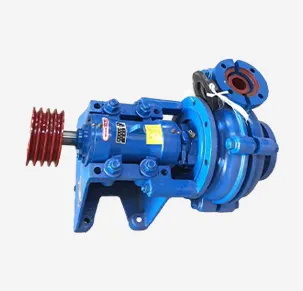hausa
- Afrikaans
- Albanian
- Amharic
- Arabic
- Armenian
- Azerbaijani
- Basque
- Belarusian
- Bengali
- Bosnian
- Bulgarian
- Catalan
- Cebuano
- Corsican
- Croatian
- Czech
- Danish
- Dutch
- English
- Esperanto
- Estonian
- Finnish
- French
- Frisian
- Galician
- Georgian
- German
- Greek
- Gujarati
- Haitian Creole
- hausa
- hawaiian
- Hebrew
- Hindi
- Miao
- Hungarian
- Icelandic
- igbo
- Indonesian
- irish
- Italian
- Japanese
- Javanese
- Kannada
- kazakh
- Khmer
- Rwandese
- Korean
- Kurdish
- Kyrgyz
- Lao
- Latin
- Latvian
- Lithuanian
- Luxembourgish
- Macedonian
- Malgashi
- Malay
- Malayalam
- Maltese
- Maori
- Marathi
- Mongolian
- Myanmar
- Nepali
- Norwegian
- Norwegian
- Occitan
- Pashto
- Persian
- Polish
- Portuguese
- Punjabi
- Romanian
- Russian
- Samoan
- Scottish Gaelic
- Serbian
- Sesotho
- Shona
- Sindhi
- Sinhala
- Slovak
- Slovenian
- Somali
- Spanish
- Sundanese
- Swahili
- Swedish
- Tagalog
- Tajik
- Tamil
- Tatar
- Telugu
- Thai
- Turkish
- Turkmen
- Ukrainian
- Urdu
- Uighur
- Uzbek
- Vietnamese
- Welsh
- Bantu
- Yiddish
- Yoruba
- Zulu
Telephone: +86 13120555503
Email: frank@cypump.com
Nov . 20, 2024 09:52 Back to list
gravel slurry pump
Understanding Gravel Slurry Pumps Essential Equipment for Heavy-Duty Applications
Gravel slurry pumps are specialized pumping solutions designed to handle abrasive and viscous materials, primarily consisting of gravel, sand, and water mixtures. These pumps are crucial in various industries, including mining, construction, and dredging, where the transport of heavy and abrasive slurries is a common requirement. Understanding their functionality and applications can provide insights into their significance in these sectors.
How Gravel Slurry Pumps Work
Gravel slurry pumps operate using a robust construction that can withstand harsh conditions. Their design typically features a high chrome alloy impeller and a heavy-duty casing, enabling them to manage solids with diameters up to several inches. The pump utilizes centrifugal force to move the slurry, where the impeller draws the mixture into the pump and pushes it out through a discharge pipe. The combination of high efficiency and durability makes these pumps suitable for handling high volumes of heavy materials.
The primary components of a gravel slurry pump include the impeller, casing, and a series of seals and bearings that minimize wear and tear. Many modern pumps also include features such as adjustable discharge outlets and variable speed drives, allowing for optimization based on specific operational requirements.
Applications of Gravel Slurry Pumps
One of the most common applications of gravel slurry pumps is in construction and mining operations, where they are used to transport materials from one location to another. In mining, for instance, slurry pumps play a vital role in moving tailings or other waste materials away from the site, helping to keep operations efficient and environmentally compliant.
gravel slurry pump

In dredging operations, these pumps are essential for extracting sediments and aggregates from riverbeds or the ocean floor. The ability to handle heavy mixtures of gravel and water makes slurry pumps ideal for such tasks, enabling the effective transport of materials over long distances. Additionally, in the oil and gas industry, gravel slurry pumps are used for drilling operations that require the transfer of drilling fluids mixed with sand and gravel.
Key Considerations When Selecting a Gravel Slurry Pump
When choosing a gravel slurry pump, several factors come into play. Firstly, the size and density of the particles in the slurry must be considered, as this will affect the pump's performance. Additionally, understanding the pump's flow rate and pressure requirements is crucial for effective operation. It’s also important to evaluate the pump’s materials of construction, as this directly impacts its durability and ability to resist wear.
Maintenance is another critical aspect of ensuring the longevity and efficiency of gravel slurry pumps. Regular inspections, cleaning, and timely replacement of worn-out parts can significantly enhance performance and prevent costly downtimes.
Conclusion
Gravel slurry pumps are indispensable tools in industries that require the handling of challenging materials. Their robust design, ability to manage high solids content, and versatility in application make them essential for operational success. By understanding their functionality, applications, and maintenance needs, operators can ensure optimal performance and reliability in demanding environments. As industries continue to evolve, so too will the technology surrounding gravel slurry pumps, leading to even more efficient and effective solutions for the transport of heavy materials.
-
High-Performance Air Pumps for Sand & Gravel | Efficient Transport
NewsAug.03,2025
-
ISG Series Vertical Pipeline Pump - Chi Yuan Pumps Co., LTD.|Energy Efficiency, Corrosion Resistance
NewsAug.03,2025
-
ISG Series Pipeline Pump - Chi Yuan Pumps | Energy Efficiency&Compact Design
NewsAug.03,2025
-
ISG Series Vertical Pipeline Pump - Chi Yuan Pumps Co., LTD.|High Efficiency, Low Noise, Durable
NewsAug.02,2025
-
ISG Series Vertical Pipeline Pump - Chi Yuan Pumps | High Efficiency, Low Noise
NewsAug.02,2025
-
ISG Series Vertical Pipeline Pump- Chi Yuan Pumps Co., LTD.|High Efficiency&Compact Design
NewsAug.02,2025










